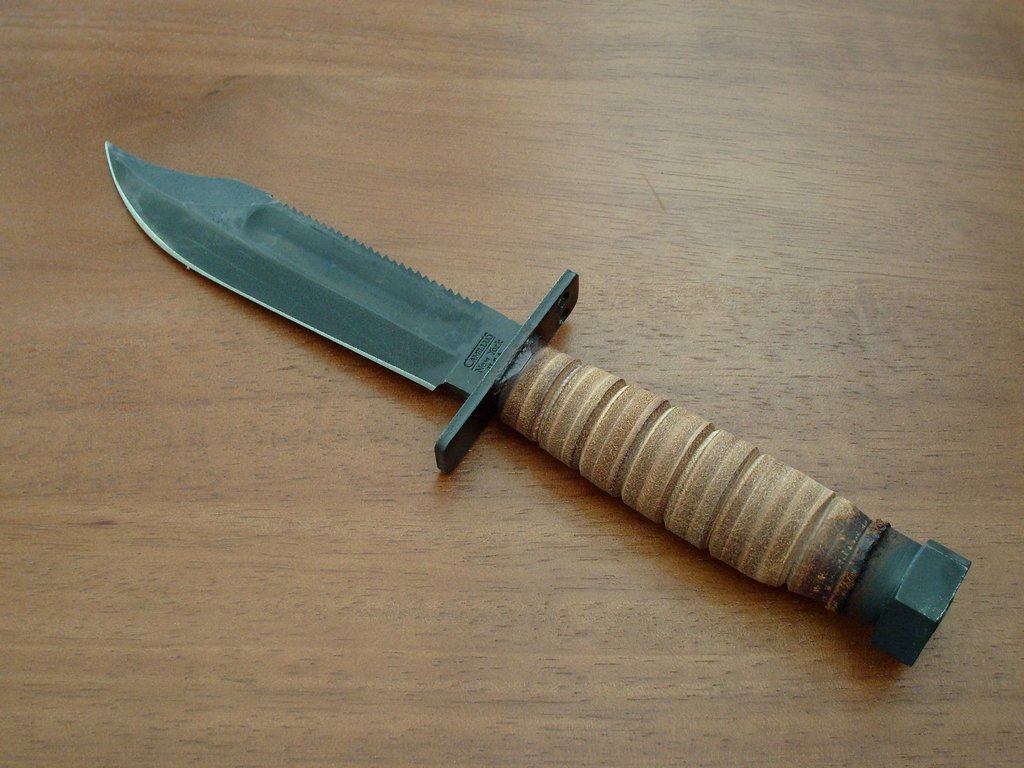Now Reading: How to Pick the Perfect Outdoor Survival Backpack
-
01
How to Pick the Perfect Outdoor Survival Backpack

How to Pick the Perfect Outdoor Survival Backpack
Are you an adventure seeker yearning to challenge the untamed wilderness? Or perhaps you’re an avid hiker seeking solace amidst towering mountains? Either way, every outdoor enthusiast knows the secret to a successful expedition lies in picking the perfect outdoor survival backpack. This indispensable companion should be capable of withstanding the harshest conditions mother nature throws your way while offering an organized sanctuary for all your essentials. In this guide, we will navigate through the myriad of possibilities, unearthing the key factors that will undoubtedly lead you to the unparalleled symbiosis between functionality and durability. So, if you’re ready to embark on a journey where every ounce matters, let’s delve into the art of choosing the ultimate outdoor survival backpack.
Table of Contents
- Backpack Size and Capacity: Finding the Right Fit for Your Outdoor Adventure
- Durability and Material: Ensuring Your Survival Backpack Can Withstand the Elements
- Comfort and Ergonomics: Prioritizing Your Carrying Style for Long-Haul Treks
- Organizational Features: Optimizing Storage Space for Essential Survival Gear
- Additional Considerations: Choosing the Perfect Outdoor Survival Backpack for Your Needs
- Q&A
- Wrapping Up

Backpack Size and Capacity: Finding the Right Fit for Your Outdoor Adventure
When it comes to planning an outdoor adventure, finding the right backpack size and capacity is crucial for a comfortable and efficient journey. Whether you’re embarking on a weekend camping trip or a month-long backpacking expedition, having a backpack that fits properly and can accommodate all your gear is essential.
To determine the ideal size of your backpack, consider the length of your trip and the amount of gear you’ll need to carry. Generally, backpack sizes are measured in liters, with smaller daypacks ranging from 20-35 liters and larger backpacks for extended trips ranging from 50-80 liters. Remember, it’s better to have a slightly larger pack than a tight and overstuffed one.
Additionally, pay attention to the backpack’s capacity. Look for compartments, pockets, and compression straps that allow for efficient organization and distribution of weight. Prioritize a backpack with a well-constructed suspension system that provides proper back support and shoulder straps that can be adjusted to your body type. Opt for durable materials that can withstand the elements and consider features like a hydration sleeve or a rain cover for added convenience.

Durability and Material: Ensuring Your Survival Backpack Can Withstand the Elements
When it comes to choosing a survival backpack, durability and material are two essential factors that can make all the difference in a life-or-death situation. Your backpack needs to be tough enough to withstand the harshest conditions and rugged terrains, ensuring that it stays intact when you need it the most.
1. Quality Materials: Look for backpacks made from high-quality materials, such as ripstop nylon or Cordura fabric. These materials are renowned for their strength and resistance to tears, ensuring that your backpack can withstand the elements you may encounter in the wilderness.
2. Reinforced Stitching: A backpack is only as strong as its stitching. Look for reinforced stitching on the stress points of the backpack, such as the seams, straps, and handles. This will prevent any potential tearing or unraveling, providing extra durability when you need it most.
3. Weatherproofing: Mother Nature can be unpredictable, which is why having a weatherproof backpack is crucial. Ensure that the materials used are water-resistant or waterproof, protecting your gear from moisture, rain, or snow. This will not only keep your belongings dry but also prevent any damage to the backpack’s structure.
Remember, a survival backpack is not just a convenient tool for storage, but it is also your lifeline in challenging situations. So, invest in quality materials, reinforced stitching, and proper weatherproofing to ensure that your backpack can withstand the elements and be a reliable companion on your survival journey.
Comfort and Ergonomics: Prioritizing Your Carrying Style for Long-Haul Treks
When embarking on long-haul treks, it’s crucial to prioritize your comfort and ergonomics in order to minimize strain and make your journey enjoyable. The way you carry your belongings can significantly impact your experience, so it’s important to choose a carrying style that suits your needs. Here are some tips to help you prioritize comfort and ergonomics for your next adventure:
- Opt for a backpack: Consider investing in a quality backpack that is designed with comfort in mind. Look for features such as padded shoulder straps, adjustable waist belts, and a ventilated back panel to ensure proper weight distribution and airflow.
- Organize strategically: Stay organized to minimize discomfort during your long-haul trek. Utilize compartments and dividers within your backpack to distribute the weight evenly and prevent items from shifting while you’re on the move. This will help maintain the balance and stability of your load.
- Distribute weight properly: Ensure that the weight of your load is distributed evenly on both sides of your body. Avoid carrying too much weight on just one shoulder or in one hand, as it can lead to muscle strain and imbalance.
- Adjust and secure: Take the time to adjust the straps of your backpack to achieve a snug and comfortable fit. Ensure that the backpack sits high on your back and that the weight is evenly distributed between your shoulders and hips. Secure all buckles and clasps to prevent unnecessary movement or shifting.
By prioritizing your carrying style with these tips, you’ll be able to embark on long-haul treks with greater comfort and ease, allowing you to fully immerse yourself in the adventure ahead. Remember, when it comes to long-distance traveling, comfort is key!
Organizational Features: Optimizing Storage Space for Essential Survival Gear
When it comes to survival gear, organizing and optimizing storage space is essential for preparedness. Having quick and easy access to your essential items can make all the difference in an emergency situation. Here are some organizational features that can help you maximize your storage space:
- Modular Storage Systems: Invest in modular storage systems such as stackable containers or adjustable shelves. These systems allow you to customize the space according to the size and shape of your survival gear, making it easy to fit everything in efficiently.
- Clear Containers and Labels: Use clear containers to store your gear, so you can easily identify what’s inside without opening each box. Additionally, labeling each container with a detailed description will save you time and avoid rummaging through multiple boxes searching for specific items.
- Consider Wall Space: Utilize all available space, including walls. Install wall-mounted racks or hooks to hang items like backpacks, tools, or other gear that can be stored vertically. This not only keeps your gear off the floor but also ensures easy accessibility and visibility.
- Dividers and Compartments: Organize smaller items by using dividers or compartments within your storage containers. This helps prevent items from shifting around during transportation and makes it easier to locate and retrieve what you need.
- Roll and Vacuum Seal: Maximize the space for clothing or textiles by rolling them up tightly and vacuum-sealing them. This not only reduces the size of the items but also keeps them protected from moisture and potential damage.
- Regular Inventory Checks: Regularly review and update your survival gear inventory. This ensures that expired items are replaced and that you maintain an up-to-date record of what you have. It also provides an opportunity to reorganize and optimize your storage space based on your current needs.
By incorporating these organizational features, you can optimize your storage space and ensure that your essential survival gear is readily accessible when you need it the most. Being prepared is key, and efficient organization is a crucial part of any survival strategy.
Additional Considerations: Choosing the Perfect Outdoor Survival Backpack for Your Needs
When it comes to selecting the ideal outdoor survival backpack, there are a few key factors to keep in mind. While durability and capacity often top the list, there are other important considerations that shouldn’t be overlooked. Here are a few additional factors to ponder before making your final decision:
- Weight: Carrying an excessively heavy backpack can quickly become a burden during long treks in the wilderness. Opt for a lightweight option without compromising on durability to ensure your comfort and mobility.
- Weather Resistance: Mother Nature can be unpredictable, so choosing a backpack made from weather-resistant materials is crucial. Look for features like waterproof zippers, reinforced seams, and water-repellent fabrics to keep your belongings safe and dry.
- Organization: An organized backpack can save you precious time and energy when facing challenging situations. Consider compartments, pockets, and attachment points that allow you to easily access and separate your essential gear, such as a first aid kit, water bottle, or navigation tools.
- Comfort: The perfect backpack should offer a comfortable fit for your body, especially during long hikes. Look for adjustable straps, cushioned back panels, and a well-designed suspension system to distribute weight evenly and prevent strain on your shoulders and back.
- Versatility: Your survival backpack should be versatile enough to adapt to various outdoor activities. Look for a design that allows you to attach additional accessories, such as a sleeping bag or tent, and consider the backpack’s capacity to accommodate longer trips if needed.
Remember, choosing the perfect outdoor survival backpack is a personal decision. Evaluate your specific needs and consider these additional factors to ensure you select a backpack that will be your trusted companion in all your outdoor adventures.
Q&A
What are the most important factors to consider when choosing an outdoor survival backpack?
When choosing an outdoor survival backpack, it’s crucial to consider factors such as capacity, weight, durability, and comfort. You want a backpack that can hold all necessary gear, without being too heavy, and that will withstand the elements while keeping you comfortable on your journey.
What capacity should I look for in an outdoor survival backpack?
The capacity of your backpack will depend on the duration of your outdoor adventure. Generally, a backpack with a capacity between 30 and 50 liters is suitable for day trips, while longer trips may require a backpack with a capacity of 50 liters or more.
What features should I prioritize for an outdoor survival backpack?
Priority features for an outdoor survival backpack include multiple compartments for organization, adjustable straps and hip belts for proper weight distribution, a water-resistant or waterproof material, and additional attachment points for gear customization.
How important is the weight of an outdoor survival backpack?
The weight of an outdoor survival backpack is crucial, as it directly affects your comfort and mobility during your adventure. Look for lightweight materials and design, sacrificing unnecessary features, to ensure that your backpack is both functional and manageable.
What materials are best for an outdoor survival backpack?
When it comes to outdoor survival backpacks, durability is key. Opt for backpacks made from tough, water-resistant materials like nylon or Cordura that can withstand rugged terrains and extreme weather conditions.
Should I prioritize comfort or durability when choosing an outdoor survival backpack?
Finding a balance between comfort and durability is essential. Look for backpacks with padded shoulder straps, adjustable hip belts, and airflow back panels to prioritize comfort, while still ensuring the backpack is made from durable materials that can handle rough outdoor conditions.
Are there any specific features to consider for wilderness survival situations?
For wilderness survival situations, consider backpacks with emergency whistles, reflective elements for visibility, compression straps to secure additional equipment, and hydration system compatibility for convenient access to water during your expedition.
What are some additional tips for choosing the perfect outdoor survival backpack?
It’s advised to try on backpacks and assess their fit before making a decision, as properly fitting backpacks will reduce strain on your body. Additionally, read reviews and seek recommendations to ensure you choose a trusted brand or model that suits your specific needs and preferences.
Wrapping Up
As you venture into the great outdoors, ensuring your safety and preparedness becomes paramount. And what better companion to have by your side than the perfect outdoor survival backpack? Through the winding trails, treacherous terrains, and unpredictable weather, this trusty gear will stand as a resilient fortress, safeguarding your provisions and essentials.
In this article, we have delved deep into the art of choosing the ultimate outdoor survival backpack, providing you with a compass to navigate the overwhelming array of options available. We have explored the intricate qualities and features that make a backpack not just an accessory, but an unwavering ally in your wilderness adventures.
From its material to its capacity, we have dissected every aspect of the backpack, paying heed to the smallest detail, so you can be sure of making a well-informed decision. We have emphasized durability, weather resistance, and the ability to withstand the rigors of even the harshest environments. After all, your outdoor survival backpack should never falter when it comes to protecting your gear from nature’s wrath.
But the journey towards the perfect backpack doesn’t end with resilience alone. We have also delved into the realm of organization, discussing the importance of multiple compartments, adjustable straps, and intuitive designs that allow for hassle-free access to your tools. Your outdoor survival backpack should be your impregnable fortress, but it should also be an ally, providing seamless organization and effortless access to your essentials.
As you peruse this guide, we hope you find not just knowledge, but inspiration, for your next escapade into the wild. May you remember that the perfect outdoor survival backpack is not solely about function, but also about finding a partner that resonates with your spirit of adventure. Allow your journey to ignite the desire within you to explore the unknown, armed with the perfect backpack that will carry your dreams and aspirations.
So, as you embark on this quest for the perfect companion, remember to weigh your options, trust your instincts, and find the balance between practicality and personal connection. The wilderness awaits you, and with the perfect outdoor survival backpack on your shoulders, you shall conquer new frontiers, elevate your outdoor experiences, and embrace the spirit of adventure like never before.
Embark now, equipped with the wisdom to make the right choice. The untamed wilderness beckons, and you shall prevail.
As an affiliate, my content may feature links to products I personally use and recommend. By taking action, like subscribing or making a purchase, you’ll be supporting my work and fueling my taco cravings at the same time. Win-win, right?
Want to read more? Check out our Affiliate Disclosure page.





